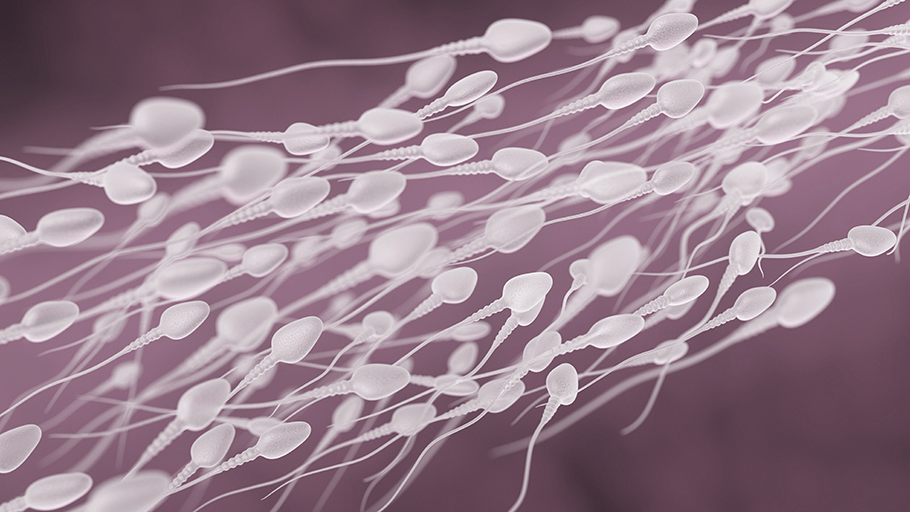It is estimated that in 20% of cases the couple’s infertility is of male origin, while in 30% of couples the infertility is of mixed male and female origin.
Sperm analysis is therefore an essential step in the investigation of infertile couples.
1 THE SPERMOGRAM
 The spermogram studies the physico-chemical characteristics of a sample of ejaculated semen.
The spermogram studies the physico-chemical characteristics of a sample of ejaculated semen.
Sperm is collected by masturbation in the laboratory after a period of abstinence of between two and five days.
Spermogram results may fluctuate from one test to the next. Sperm cells are renewed in waves every 74 days. So it’s important to wait 2 to 3 months before having another check-up.
Any acute health problem can alter a sperm wave. A high fever, an abscessed tooth or surgery can all cause a sudden drop in sperm quality. It is important to always carry out a follow-up examination at a distance before concluding that sperm parameters are permanently abnormal.
1.2 MIGRATION-SURVIVAL TEST
In the vast majority of cases, this test is coupled to the spermogram, and will therefore be carried out on the same collection if requested by the prescriber.It is more of a therapeutic than a diagnostic test. After centrifuging the sperm on a density gradient, it determines the number of live, motile spermatozoa that can be isolated from an ejaculate. This data is used to select the type of MPA technique to be used: any technique, intra uterine insemination, IVF or ICSI.
1.3 SPERM CULTURE – URINE ANALYSIS
This is a bacteriological examination of the sperm. Sometimes totally asymptomatic, the presence of germs in the sperm can explain certain abnormalities, such as the presence of too many white blood cells in the sperm (leukospermia), or problems with sperm vitality (necrospermia) or mobility (asthenospermia).
Sperm culture should also be combined with a search of the first urine jet for other germs such as chlamydia and gonococci.

